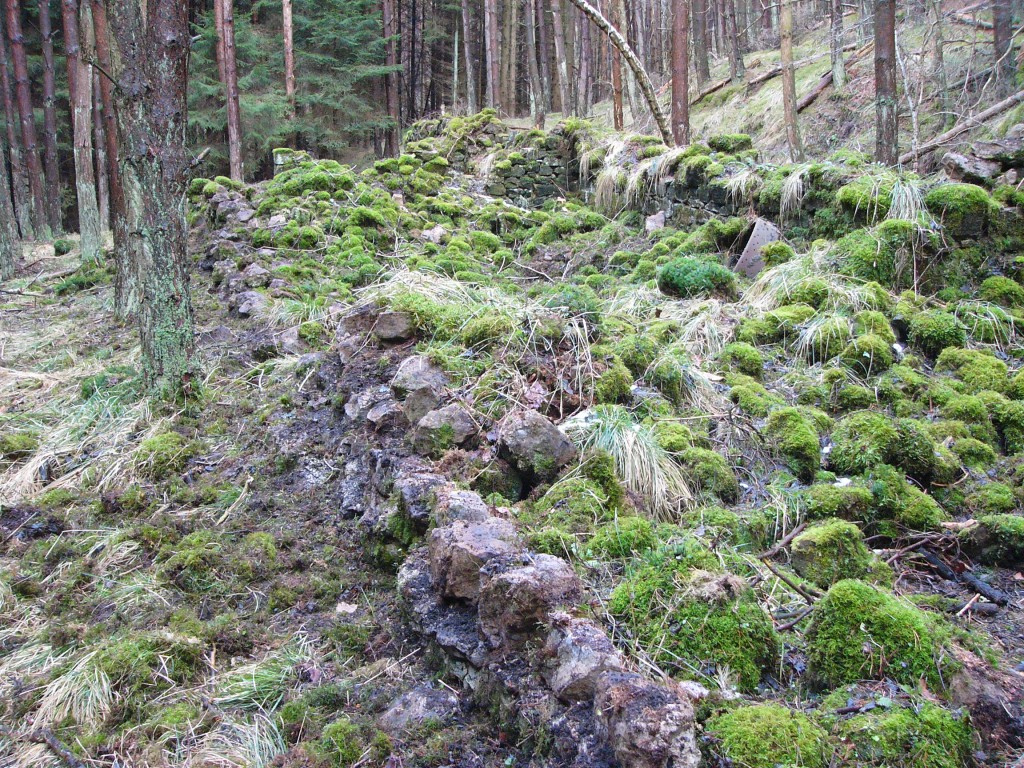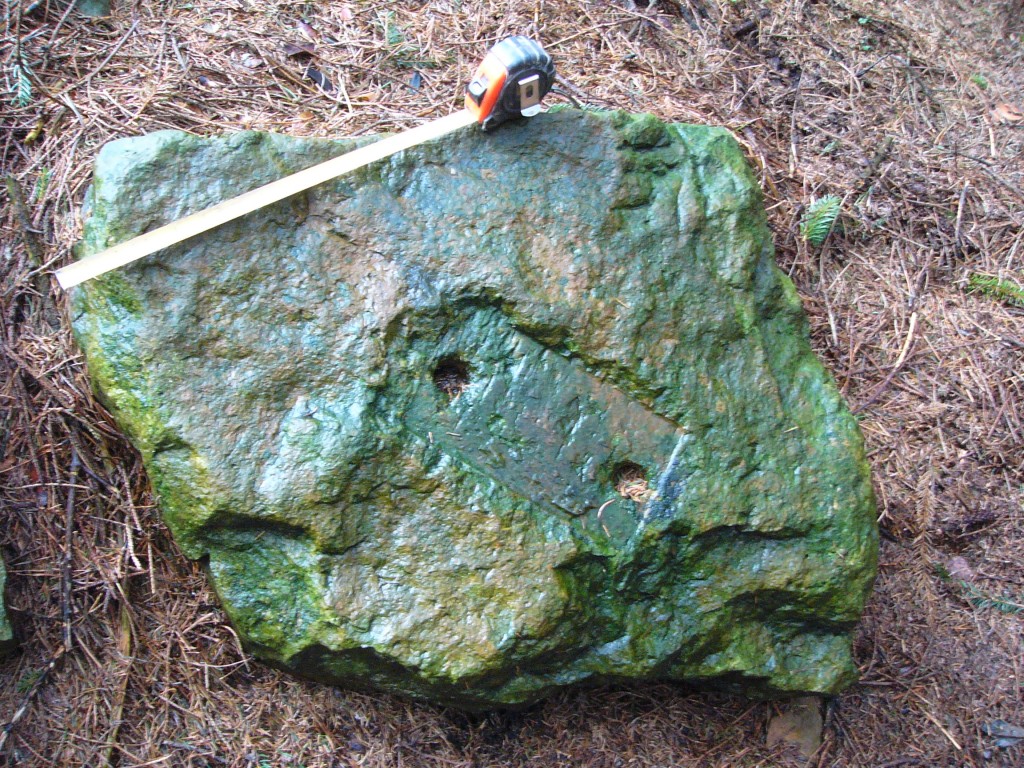Six members and two guests made their way to Levisham Station NYMR for a visit to Levisham Mine. Although we had intended parking on the moor the ground was so saturated that we decided to meet at the station instead where a cup of tea was the first stop although my NYMR luck deserted me and I had to pay for all the teas.
We walked up the road and struck off to the north to wander across the open moor to the edge of Newtondale for a look down into the valley where snow still lay in the shadows and the rising mist was almost like smoke. Here are two sandstone quarries, at least one of which was active in the 1830s to supply stone sleepers to the Whitby and Pickering Railway under construction in the valley below. Wandering through the quarries we followed the route of the incline down towards the railway line just in time to witness the visiting LNER B1 4-6-0 running tender-first hauling its train up the gradient towards Goathland.
After climbing a fence or two we arrived at the ruins of Pit Farm then followed the route of the branchline which served the ironstone mine, noting the depressions left by wooden sleepers. The distance to the mine site is about a quarter of a mile, the branch mainly running on a low embankment through the fir trees which have grown up during the last 40-odd years. At the site a row of ruined buildings and a stone wall line the railway branch and a track cut between them leads slightly uphill to the infilled shaft with its chimney and boiler plant remains.
Until the mid-1960s the site was much as it had survived after abandonment, easily noticed from the nearby railway because of its distinctive stone chimney. Unfortunately at that time the site was included within a new plantation of the Forestry Commission who decided to demolish the chimney and bulldoze earth into the open shaft, probably about 250 feet deep.
A history of this mine was researched and published by John Owen which describes the abortive efforts of the landowner, James Walker, to develop a mine in order to cash in on the ironstone mining boom of the late nineteenth century. Unfortunately the Top Seam, which appears to be what he was sinking to, appears to be in the order of about 600 feet deep and is usually of very variable thickness and quality. A second shaft would have been necessary so altogether a very expensive and dubious undertaking.
We decided to examine the range of ruined buildings and spent much time taking fallen and dead trees off the stone walls, all rather poorly built. The range appears to have consisted of four rooms; the first one at the north end has had a fireplace and a connecting doorway in its party wall. The adjoining room has been similar in size, then the next south has been the largest room, perhaps a blacksmith’s shop. The southernmost room has been extended along its uphill side.

We got our two lady guests usefully employed in clearing moss from the tops of the walls which helped to identify the sizes and shapes of the rooms but no outer doorways or window openings were obvious. More work is needed but at least we managed to take basic measurements of the structure.
A significant discovery on the side of the railway opposite the workshops range was a broken stone sleeper dating from perhaps 1835. Nearby were two complete ones but their origin is unknown as when the mine was working in the 1860s stone sleepers had been long abandoned. It seemed unlikely that they had simply rolled down the hill from the quarry above.

Afterwards we ascended the hillside behind the site by ‘limbo-dancing’ beneath the tall forestry fencing then looking at a trial drift into the Cornbrash. Climbing out of the valley we wandered along the top for a look at the ruin of Skelton Tower where the Rev. Skelton, landowner before Mr. Walker, used to sit and write his sermons.
By the time we returned to the station the trains had all gone but the usual keen volunteers were still about although the facilities were locked up. Fortunately I am known at the place and the keys were soon produced, to our general relief.
Simon Chapman